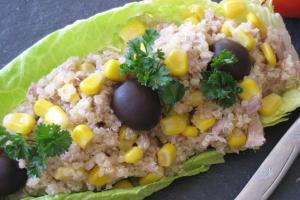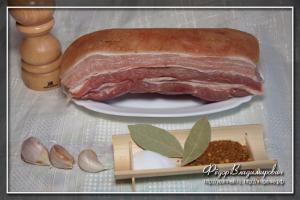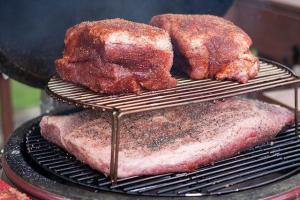The brown ends of the leaves of a palm tree are the result of excessive dry air and improper watering (overdrying or waterlogging) of the earthen clod. In the summer, the palm tree is watered abundantly, avoiding stagnation of moisture (water cannot get into the “heart” of the plant - it will rot and the palm tree will die), the leaves are washed with water to prevent pests and drying out, and sprayed. If the temperature in the room is above 16-18 degrees, the palm tree should be sprayed daily. In winter, watering of palm trees is reduced, as they need a period of relative rest (from November to February) and slow down (or completely stop) growth.
Now regularly spray the palm tree alternately: with water with the addition of “Epin” and horsetail decoction. Sometimes use horsetail decoction for watering palm trees, adding it to irrigation water - it is rich in silicic acid, which palm trees love. If there are no leaves left on the palm tree, build a “mini-greenhouse” in a pot to create a microclimate for its roots and a bulbous thickened shoot with a vegetation cone from which new leaves develop; Ventilate the greenhouse regularly.
In winter, protect the palm roots from the cold. At the end of the dormant period, transplant the palm tree into a new deep (since the roots of palm trees are long) pot with drainage, preparing a substrate from equal parts of turf, leaf, peat soil, humus and sand (for adult palm trees, clay is added to this mixture). When replanting, remove dead roots by sprinkling the cuttings with charcoal; Healthy roots cannot be trimmed - place them in a “ring” in the pot. After new leaves appear, start fertilizing by fertilizing the palm tree in spring, summer and half of autumn (from March to October), alternating mineral and organic fertilizers.
Keep the palm in the light (but keep it out of the sun) or in partial shade. Loosen regularly upper layer soil without touching the roots; protect from drafts. Dried or damaged leaves from palm trees can only be removed when the petiole of the leaf dries out - otherwise nearby leaves will begin to dry out.
Recipe for horsetail decoction concentrate: 30 g of dried horsetail (buy at a pharmacy), pour 1 liter of water and leave for a day, then cook for half an hour and strain after cooling; dilute 1:5 before use. This decoction is also effective for spraying indoor plants against powdery mildew.
If suddenly the leaves of a palm tree growing in your house begin to turn yellow and dry out, there is no need to panic - you just have to think about how to revive the palm tree. This is quite easy to do. This symptom of “disease” can appear when there is a lack of moisture or in very dry air. Therefore, you need to trim the leaves, slightly above the dry part of the leaf, then wash each leaf with water (if it is winter) or spray it with water (if it is summer). And yet, do not forget about regular watering of the plant.
Even children know what a date palm looks like. This is the best among ornamental plants due to the evergreen spreading crown at the top. Under natural conditions, it reaches a height of 10 to 30 m. Its straight trunk is distinguished by its “shaggy” appearance. However, at home, the height of the palm tree is 2-2.5 m. Do not forget that the palm tree is a southern plant, which means it loves warmth, light and moisture. Providing all this at home is troublesome, but possible (although, of course, a greenhouse would be the ideal place for a palm tree).
If you don't know how to prune a palm tree, you can destroy it. The fact is that a “domestic” palm tree cannot be trimmed with its beautiful spreading leaves. Then she will lose her luxurious decorative look, and in the places of the incision the plant may begin to “hurt”. The only thing that can be trimmed is the roots of the plant at the time of replanting, which must be done annually until the palm tree reaches its fifth year of age. When the palm tree is older than five years, all its roots need is space, so the tub should be quite voluminous.
If you wish, you can plant a date palm at home. How to grow a date palm at home? Remembering that the palm tree is a large plant, you need to take care of a tall pot in advance. When replanting a palm tree, it is advisable to lay a layer of drainage on the bottom of the pot to gradually replenish it with moisture. The roots themselves must be planted exactly at the depth at which they were planted before transplanting, otherwise the roots will rot. Although the date palm loves warmth, it is not picky at home, and a temperature from +18 to +220C is enough for it.
Lovers of exotic plants should remember that, for example, the mixed palm tree is very capricious - how you care for it is how it will grow. It needs to be watered abundantly, but rarely, in both spring and summer. In winter, the “golden mean” must be observed, that is, not often, but also do not forget about watering. As with other types of palm trees, you need to remember that the leaves cannot be trimmed, since this is where the growth point of the palm tree is located. By growing a palm tree at home, you can receive positive emotions not only yourself, but also make your friends and loved ones happy.
Many people grow small indoor palm trees at home, because this exotic plant can bring city apartment a little summer vibe throughout the year. But what to do if your pet starts to get sick? You can often see how the foliage of a palm tree begins to dry out. In this article we will talk about why the tips of palm leaves dry out and how to deal with this scourge.
Causes of palm leaves drying out
- The main reason for drying palm leaves is most often a lack of moisture or too dry air. Indeed, in nature, this plant lives in regions with high air humidity, so a certain amount of liquid is vital for the palm tree.
- However, there is another possible reason why the leaves of a palm tree dry out. For example, too frequent and abundant watering will also not have a good effect on the health of the palm tree. The roots may rot and the plant will die.
- In addition, do not forget about pests and diseases, which can also cause problems for the plant.
What to do if the leaves of a palm tree dry out?
Here's what to do if the tips of the leaves of a palm tree dry out:
- First of all, dried leaves should be carefully removed. If the entire leaf has dried, then it must be removed entirely, but if only the tip has begun to dry out, then only the dried part should be carefully cut off.
- Then, if the leaves of the palm tree turn yellow and dry out, you need to replenish the missing water as soon as possible. To do this, the plant must be regularly sprayed and watered properly. It is important that the earthen ball is moistened evenly. This can be checked by knocking on the pot in which the palm tree is growing.
- You should also periodically fertilize the palm tree with special liquid fertilizers.
If the leaves on your home palm tree are drying out, you may not be maintaining the proper conditions. Tropical palms need to be kept warm in winter, while subtropical palms tolerate winter better in cooler conditions.
There are many reasons why a palm tree turns yellow. Some of them are natural; over time, the yellow spots disappear. Other reasons are due to improper care of the plant and require certain measures to be taken.
Yellowing of leaves is a sign of improper care
Palm tree is an exotic plant from the tropics. In a city apartment, the southern flower often does not acclimatize well and needs to create the proper conditions for normal growth and development. Otherwise, the color of the leaves changes, its owners have a question about why the leaves of the palm tree turn yellow.
Common causes of yellowing foliage
Sometimes palm leaves turn yellow and fall off for a natural reason - the plant gets rid of old lower leaves. But most often yellow leaves appear for other reasons.
Dry air
Owners of indoor plants are often perplexed as to why palm leaves dry out. Often in winter it becomes hot in apartments due to hot radiators. This atmosphere has a negative impact on green plants, for palm trees, a suitable temperature in winter is considered to be between 15 and 20 degrees. Dry air needs to be humidified tropical plant should be sprayed with a spray bottle. The top layer of soil should be moist; the palm tree should not be watered frequently.
Draft
The opinion that a palm tree can only be placed in the southern part of the room is incorrect. Direct sunlight has a detrimental effect on the plant; it is best to place the pot a little away from the window. In winter, a cold windowsill harms the flower, at this time of year most of palm trees dry out and wither, their leaves turn yellow, turn black and fall off. Drafts are contraindicated for palm trees.
During ventilation, it must be covered or taken out of the room. At the same time, the access of fresh air to the palm tree cannot be stopped, otherwise growth will slow down.
Frequent replanting
One of the answers to the question why the leaves of an indoor palm tree turn yellow is improper replanting. You need to place a palm tree in a new pot when it is cramped in the old pot, the roots have grown too much. Replanting a young plant should be done no more than once a year. In some cases, the top layer of soil can be replaced. More old flower replanted approximately every three years. The new pot should be taller and wider than the previous one.
Diseases and pests
Shields
Sometimes the question is why the palm tree dries , is resolved in an unexpected way - insects, among which the most common are scale insects. These round, brown insects are from the Homoptera family; females have so-called scutes. Palm scale insects attach to young shoots and suck the juices out of them.
There are several options for substances to combat scale insects:
- soap solution;
- garlic solution;
- alcohol solution;
- chemicals - insecticides (actellik is the most effective).
Spider mite
This small insect is difficult to see. If a mite is present, the leaves turn yellow and become covered with small cobwebs.
To defeat spider mite folk (onion solution) and chemical methods. Before processing, the palm tree should be thoroughly wiped with a damp cloth.
This is one of the most dangerous insects for palm trees and is a large white louse. The plant looks as if it has been sprinkled with flour, all parts are covered with mucus. The insects attack the flower very quickly and the palm leaves turn yellow.
To save the palm tree from mealybug, are needed preventive measures. If trouble happens, then all the above methods of pest control are effective. You can use citrus zest tincture and olive oil.

Mealybugs are extremely dangerous to palm trees
Leaves turn black: factors
Leaves or their tips may turn black:
- due to the predominance of dry air in the room and lack of optimal watering;
- due to excess moisture, access to cold air, compacted soil in the pot.
It is enough to eliminate the negative aspects to revive the plant. Additionally, you can try feeding it with fertilizers.
Popular types
This plant with feathery wide leaves and a dense crown is quite unpretentious in care. It grows best on clay-turf soil. There are about 15 species date palm, it has hard edible fruits - dates.

Date palm is an unpretentious plant
Bhutia
It can grow up to 6 meters in length, its crown resembles a fan, and the leaves are hard. IN room conditions You can try growing a dwarf species. Bright sunlight is beneficial for butia, and high humidity- no, it dries up. In summer, weekly watering is sufficient, and in winter this can be done even less often. Butia blooms beautifully.
Liviston
There are about three dozen types of livistona. At home, it can grow up to 3 meters long and has bright green leaves.
Caring for it does not require much work: it must constantly receive moisture, the temperature in the room should not fall below 20 degrees.
This species is distinguished by narrow, hard leaves. Chamerops is not afraid of straight lines sun rays, grows slowly, in frequent transplantation does not need, the soil of the plant should be loose.

Chamerops is not afraid of the scorching sun
Hovea
The variety has wide, feathery leaves. It grows slowly, but can reach the ceiling. Howea tolerates the absence of light, moisture, and the invasion of harmful insects.
Washingtonia
This flower needs constant sunlight, it can tolerate low temperatures (up to 8 ° C). What you should not do is water Washingtonia too much, otherwise the soil will dry out.
Yucca
The most common type of palm tree. She needs light almost around the clock; the pot with yucca must be turned so that the rays of the sun fall on it. During the dark season, artificial lighting should be used. Watering yucca depends on the season - in winter and autumn it needs less water. Indoor yucca does not bloom.
This plant is characterized by fan-shaped leaves and can grow large sizes, or may remain in a small pot. For successful growth at home, minimal conditions are needed; sabal has a medicinal effect.

Sabal can grow to impressive sizes
How to humidify the air
Dry indoor air causes palm leaves to turn yellow. Unusual way humidification - place several pots with plants in the room.
They will release moisture into the surrounding atmosphere, which will create an optimal microclimate in the room. Another popular method is to use a household humidifier.
Ventilation
It's necessary all year round to bring in fresh air so that the tips of the leaves do not dry out. At temperatures below 0 °C, windows and vents should be opened for a short time, but often. The room temperature should be within 20 °C.
Natural evaporation of moisture
There are several methods:
- place containers with water near the palm tree;
- install an indoor fountain;
- place wet towels on the radiator;
- Place wet expanded clay or pebbles under the pot.
Domestic palm trees have long come to our homes from southern latitudes, from hot countries. Today, these southern beauties are used with great success for landscaping a wide variety of rooms. But sometimes you can see that the tips of the palm leaves turn yellow, or even the entire leaf dries out and falls off. Why this happens and whether it is possible to avoid such troubles when growing palm trees at home is a question that concerns many lovers of this beautiful exotic plant.
The main cause of leaf drying home palm is not proper care and incorrect content. There are several possible reasons for this.
Proper watering
The most important condition for the formation of beautiful green leaves on a domestic palm tree is proper watering In addition, plants need regular spraying. It is imperative to carefully ensure that when watering the earthen ball is sufficiently evenly saturated with moisture. This nuance is revealed by simply tapping the pot. If the sound is ringing, it means the ground is dry. A dull sound—wet. It is also necessary to pour out excess water from the pan after watering the plant. Water for watering a palm tree should be used that has settled, and the plant should be watered only after the soil has dried, checking by tapping the pot.
Room temperature
It is necessary to monitor the air temperature in the room where the palm tree grows. It would be a mistake to assume that palm trees need heat in winter. Palm trees, which are native to the tropics, experience moderate winters. warm conditions, but subtropical beauties need cooler conditions in winter.
For most plants optimal temperature in winter - 16 -20 degrees. And you should not place the plant in a draft, especially in winter. Plants do not tolerate drafts, especially in winter; they are too sensitive to cold. To prevent damage to the palm tree's root system, do not place the plant on a cold marble floor or window sill in winter. Having placed the plant in a safe place, it is still necessary to ensure that the palm tree receives fresh air, otherwise its growth and development will slow down.
Hydration
Air humidification during heating season- a prerequisite for keeping a home palm tree. Dry air can greatly harm the plant. The leaves begin to dry out, the tips quickly turn yellow, and then gradually die off. Therefore, during the heating season, plants certainly need to be sprayed and humidified the air in the apartment. Giving your palm tree a gentle shower every morning will give you wonderful results and will also improve the humidity in your home. (It is better to take boiled, settled water for this purpose and pour it into plastic bottles for storage).
You can purchase a special air humidifier; today there are a great many of them on sale, with a variety of functions. They are capable of spraying water in a room, spraying it with the help of a fan. It is very convenient to use a hygrometer to determine the humidity in a room. There are even digital versions of hygrometers - thermohygrometers - with additional indication of air temperature and time. Although there are folk method determination of humidity. You just need to put it in the room pine cone. If the room is dry, the scales on it open, and if it is damp, they close tightly.
Feeding and replanting
Today there are special ones for palm trees liquid fertilizers. In summer, the plant needs to be fed twice a month, and in winter, once is enough. If the root system has grown, it is necessary to promptly replant the plant into a pot of suitable size. But if this is done incorrectly, the palm leaves may begin to turn yellow. A young flower should not be replanted into a new pot more than once a year. An old palm tree can be replanted every three years. A new pot for a plant is chosen not only by color. It needs to be a little taller and wider than the old one. Also, when trimming the yellowed tips of yellowing leaves, you need to be careful not to cut off or damage the green part of the leaf. This will only cause the sheet to dry out faster and soon fall off.
Diseases and pests
Sometimes the cause of leaf drying on a palm tree is insect pests. Most often these are scale insects - small brown round-shaped insects, and females have small scutes. These insects, having attached themselves to the young shoots, suck the juices out of them. As a result, the palm leaves turn yellow and the plant may die. There are many ways to kill insects folk ways, as well as insecticides that are quite effective.

Care and proper care will give you the opportunity to admire the beauty at any time of the year. ornamental plant at your home.








